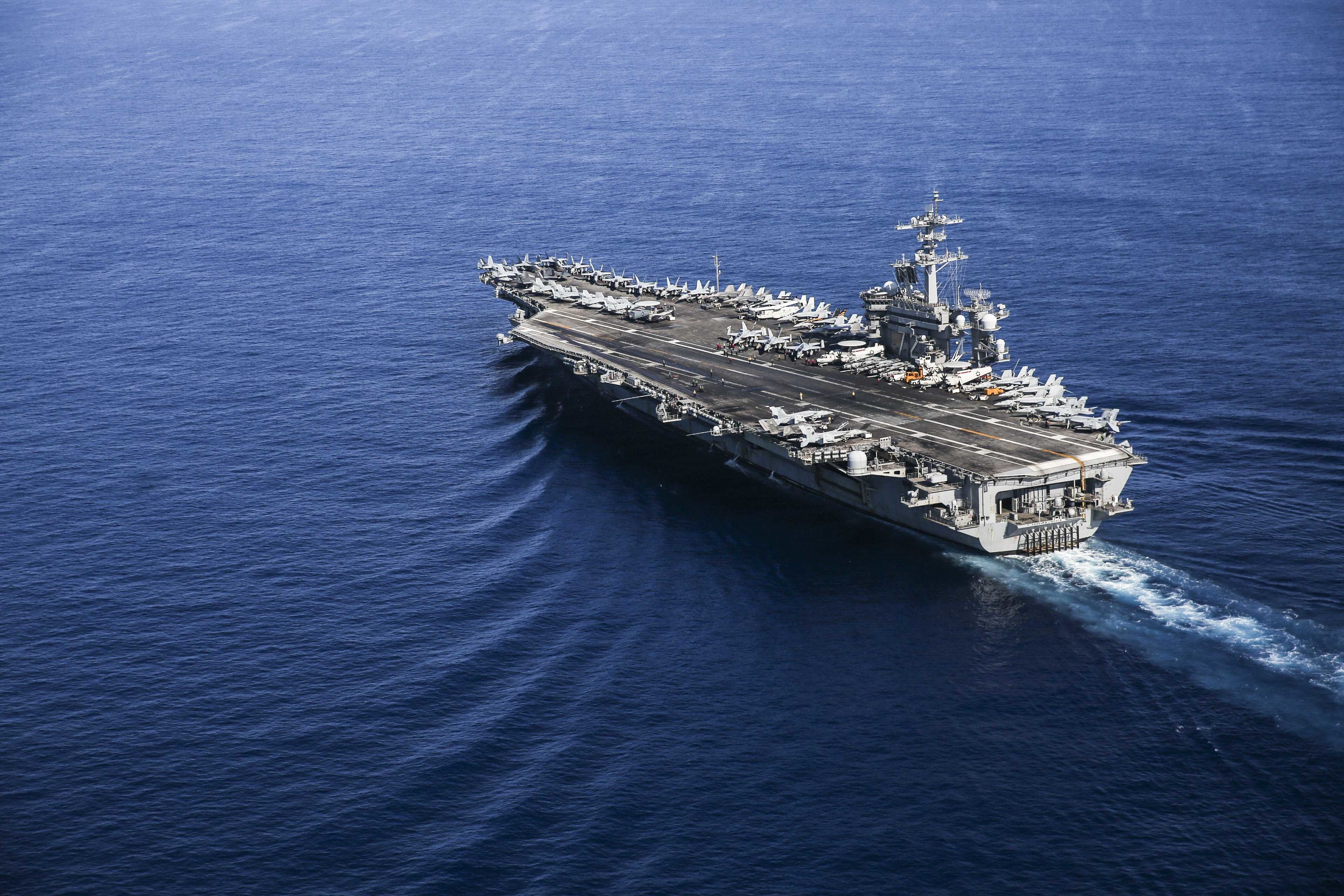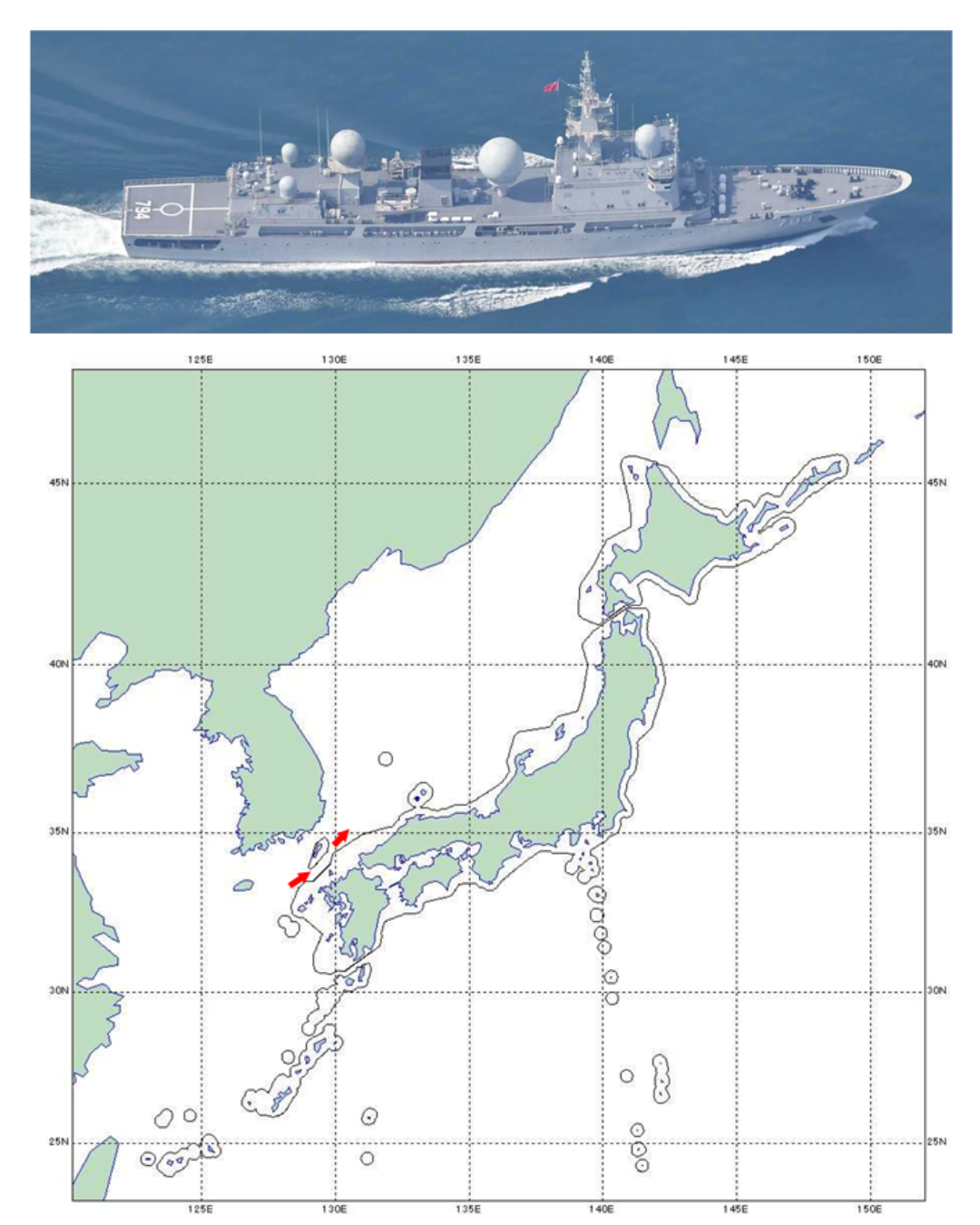
KUALA LUMPUR, Malaysia – Aircraft carrier USS Abraham Lincoln (CVN-72) is in the Sea of Japan, in time to coincide with key North Korean anniversaries like the 110th birthday of its late founding leader Kim Il-sung on April 15 and the founding anniversary of the North Korean People’s Revolutionary Army on April 25.
The carrier’s recent move is the second time this year Lincoln has been employed to conduct a presence operation to deter North Korea, with an earlier one carried out on March 15 in the Yellow Sea as a response to North Korean intercontinental ballistic missile launches on Feb. 27 and March 5. Lincoln was previously operating in the South China Sea off the coast of the Philippines.
At the same time Lincoln is operating in the Sea of Japan, Japan on Monday tracked a People’s Liberation Army Navy (PLAN) surveillance vessel as it transited the Tsushima Strait and entered the Sea of Japan, trailing the carrier. The Joint Staff Office (JSO) of the Japan Self-Defense Force on Monday issued a news release stating that a Dongdiao-class surveillance vessel number 794 was sighted 80 miles southwest of Tsushima at noon on Monday and heading northeast.
The surveillance ship then went north into the Tsushima Strait and sailed into the Sea of Japan. A photo of the ship in the release shows it carrying the pennant number 794, though the ship’s name could not be ascertained, as the PLAN has been renumbering the pennants of its surveillance vessel fleet. Japan Maritime Self-Defense Force fast attack craft JS Otaka (PG-826) and JMSDF P-1 maritime surveillance aircrafts of Fleet Air Wing 1 – stationed at Kanoya Air Field and Fleet Air Wing 4 station at Naval Air Station Atsugi – monitored the PLAN ship, officials said.

North Korea’s actions and concerns about China’s increasing assertiveness has led Japan’s Defense Ministry to consider a large budget request for the next fiscal year, in addition to acquiring abilities to strike enemy bases. In an interview with Kyodo News on April 5, Defense Minister Nobuo Kishi stated that the Defense Ministry wanted a budget that was enough to strengthen Japan’s defense capabilities drastically through March 2024, adding that Japan needed to quickly bolster those capabilities given the increasingly severe regional security environment.
While it’s important to work together with the international community to deter China and keep military emergencies in the Taiwan Strait from occurring, Japan should have the ability to strike an enemy base to beef up deterrence, so potential enemies believe they will have to “pay a price for attacking” the country, Kishi said. The move to acquire such strike capabilities is controversial given Japan’s long adherence to a defensively orientated policy based on its pacifist constitution. Kishi argued in the interview that it would be costly only to pursue bolstering capabilities to intercept missiles due to North Korea’s “rapidly advancing technologies” in that area.
Meanwhile, nuclear attack boat USS Annapolis (SSN-760) arrived March 28 at Naval Base Guam from Naval Base Point Loma, San Diego, Calif., shifting its homeport as part of the U.S. Navy’s strategic laydown plan for naval forces in the Indo-Pacific region, the service announced on Sunday. In accordance with the strategic laydown plan of 2021, Annapolis is the fifth Los Angeles-class fast-attack submarine to be homeported in Guam alongside USS Asheville (SSN-722), USS Key West (SSN-758), USS Jefferson City (SSN-759) and USS Springfield (SSN-761). Springfield arrived in Guam one week before Annapolis.
Further south, the Australian Department of Defense issued a news release stating that the Indian Navy is deploying a P-8I maritime patrol aircraft to Darwin from April 11 through 15 to conduct coordinated exercises with a Royal Australian Air Force P-8A Poseidon aircraft.
This is the first time an Indian Navy P-8I aircraft has deployed to Australia outside of a routine military exercise and reflects the strength of the India-Australia defense and security partnership, according to the release.





